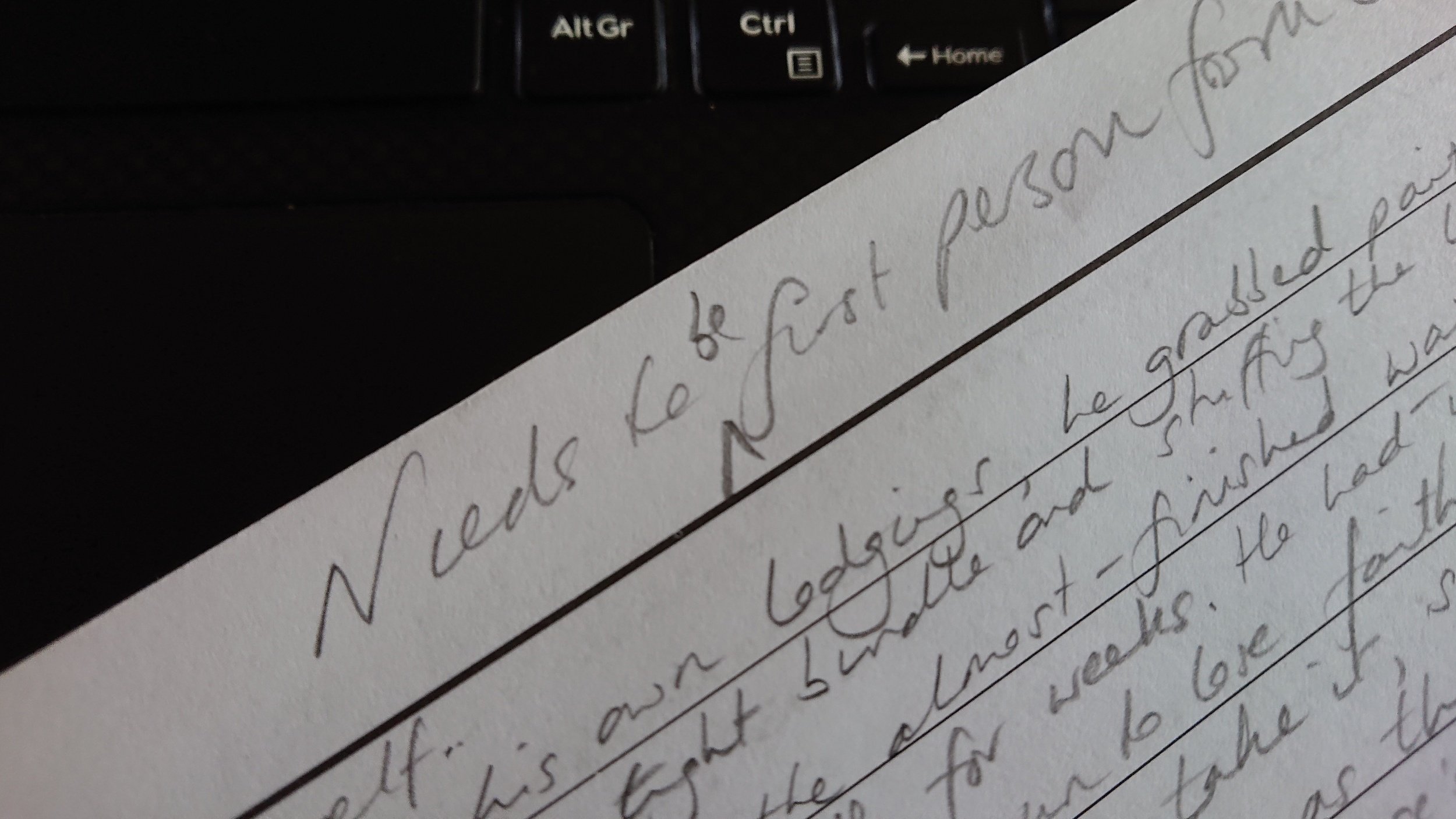As mentioned recently, I had a lovely time at the UK Ghost Story Festival in Derby in February. I went to quite a few writing workshops, and learned some great new techniques for creating haunting images within my writing.
However, I think the single most useful moment came while listening to one of the authors’ speaker panels. Annoyingly, I can neither remember which panel, nor which author, or I’d credit them. Anyway, someone mentioned in passing that many scary stories are written in the first person, simply because it’s easier to create a feeling of immediacy, to make the fear more tangible, and to bring the reader more intimately into the story.
And I thought: yup. That’s what’s wrong with the story I’m writing at the moment. It’s third person. And it needs to be first.
Back in my hotel room that evening, I scribbled a note to myself (you can see it above!) and immediately switched to writing from my main character’s point of view. Everything went much more smoothly, and I no longer found myself battling so hard to convey what was happening. Around a month later (I have a day job, y’know) I finished the first draft. I began the process of typing it up, thinking I’d just change he to I as I went. After all, it was only the first few pages.
Nope. Firstly, it wasn’t. It was the first four thousand words of a nine-thousand-word first draft.
Secondly, it turns out that switching viewpoint is a lot more complicated than I’d realised. Very early in the story, our hero is in the process of lighting up a cigarette when someone shows him something amazing. He is appropriately amazed, and immediately runs off to do something. The third-person-omniscient viewpoint pulls back to show us his cigarette, dropped and forgotten on the floor.
This scene just does not work when translated to first person. A character can’t show you the thing that is left behind after he has left the room. He also can’t tell you about a thing that he has completely forgotten in his excitement because, by definition, he has forgotten it. He could, at a later stage, mention that he needs a smoke - but we are no longer in the moment.
Descriptions, too, needed to change. No-one, as a rule, describes themselves as looking pale after a shock. They might feel dizzy, or light-headed, or nauseous - but I’m reasonably certain I’ve never, after learning bad news, thought to myself “I look really pale”. An external viewpoint might mention someone speaking in a unpleasantly demanding tone, but I’d think it’s comparatively rare for anyone to describe themselves in that way.
Having populated my story with an inconveniently large number of characters, I found I needed to rewrite quite a lot of the dialogue. Keeping track of five people speaking is painful, but when the I of the story also has to keep track of who’s speaking… well, it’s still painful. It’s just different! Page four of the long-hand draft has a sad little note about how this was going to be quite some rewrite.
And it was! It is, however, much better for it (I think!) The lessons here are to think a little more clearly about the point of view you want before you start - and, if you do get it wrong, don’t mistake it for something you can “just” change as you type up!
